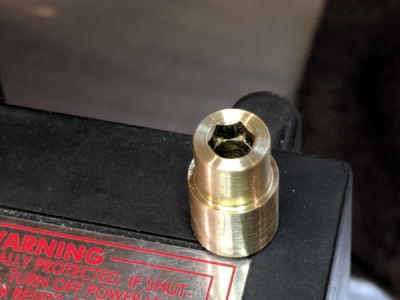- Joined
- Mar 25, 2013
- Messages
- 5,127
I finally got around to making a rotary broach for that special project that I have not yet envisioned:
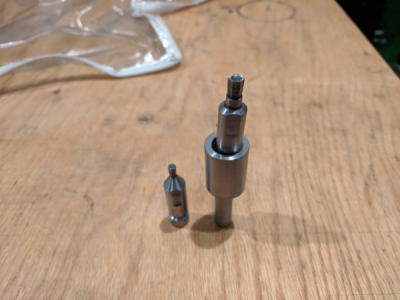
I used my Sherline tool cutter and grinder to grind the broaches out of O1 tool steel:
I clamped a 1/2" bar in my 5C collet block and mounted the vise with 2.5 deg of angle as viewed from above.
The hexagonal collet block worked out perfectly. I was within .02mm on the cutter diameter.
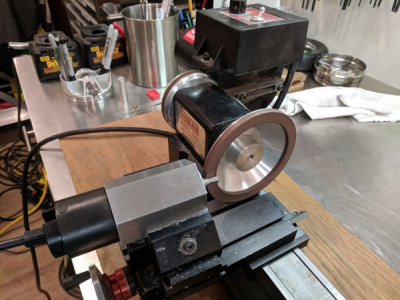
Then I used my Dremel precision tool grinder to dish out the ends rotating the work and the tool:
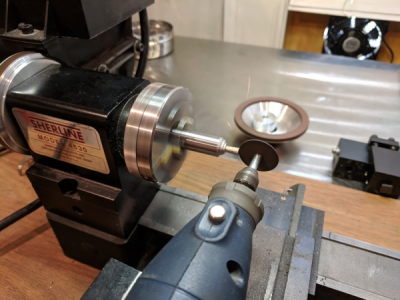
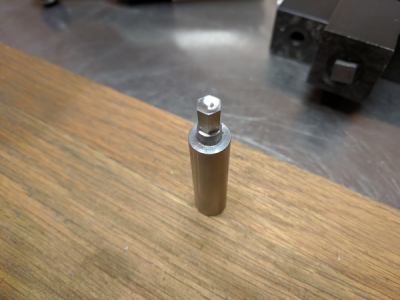
Finished after hardening and tempering:
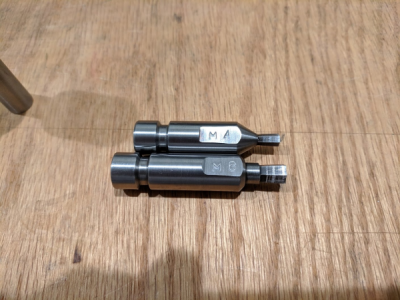
Here is the first hole I made. It is not as clean as subsequent holes. I sharpened the tool after this cut and it works much better.
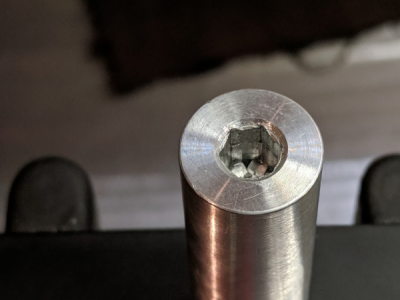
I have one question. The offset base that I made has a wobble of about 0.070". Is that enough wobble? I could go up to 0.100" without interference. Is it worth increasing this offset?
Robert







I used my Sherline tool cutter and grinder to grind the broaches out of O1 tool steel:
I clamped a 1/2" bar in my 5C collet block and mounted the vise with 2.5 deg of angle as viewed from above.
The hexagonal collet block worked out perfectly. I was within .02mm on the cutter diameter.

Then I used my Dremel precision tool grinder to dish out the ends rotating the work and the tool:


Finished after hardening and tempering:

Here is the first hole I made. It is not as clean as subsequent holes. I sharpened the tool after this cut and it works much better.

I have one question. The offset base that I made has a wobble of about 0.070". Is that enough wobble? I could go up to 0.100" without interference. Is it worth increasing this offset?
Robert






Last edited:

